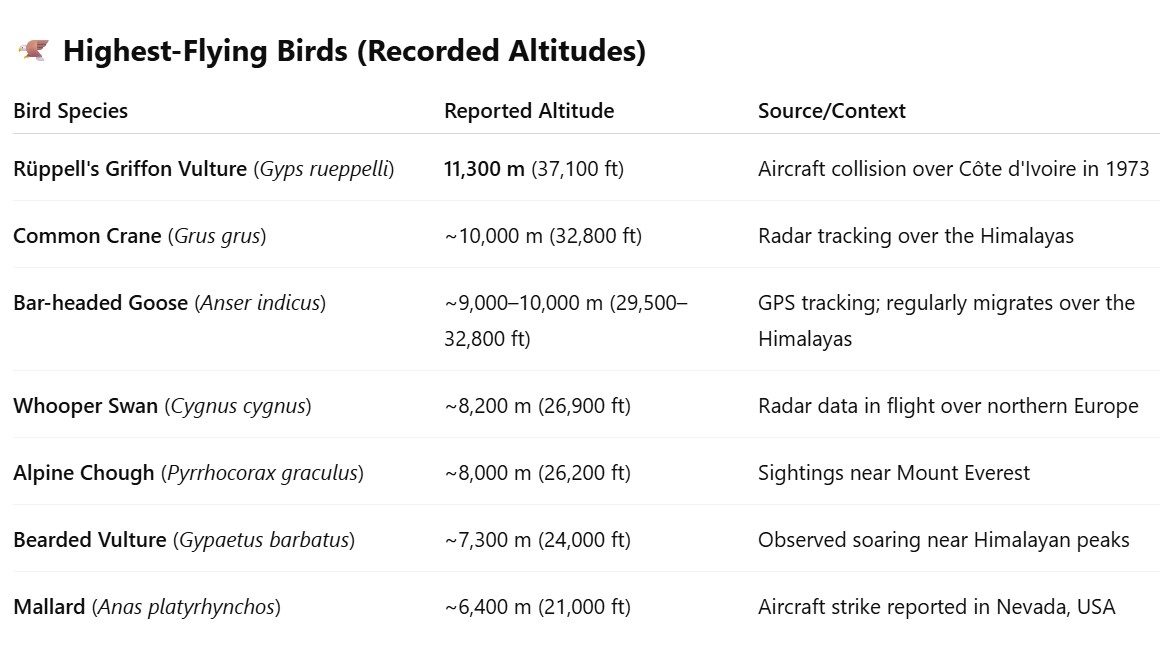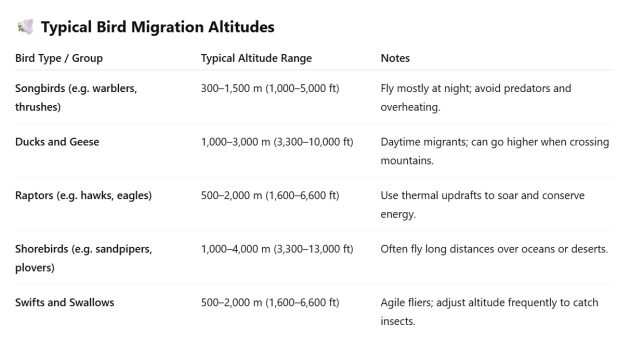
As the saying goes, 1001 words say more than one picture, but I cannot write so much about this topic – so better look at the illustration.
Some of the altitude data may be a bit murky, depending on whether it was measured by GPS tags (reliable) or inferred from the plane’s altitude (less reliable). In any case, altitudes of up to 10 km are not unusual for a few species.
However, typical flight altitudes during migration are much lower, typically well below 3,000 meters, as the second table shows.

The flight altitude during migration is influenced by several factors:
- Obviously, flying over mountains may require a higher altitude
- The wind direction or strength may be different at different altitudes – birds will seek out altitudes with tailwinds, which may be at higher altitudes
- It also depends on the time of the migration – typically, nighttime migration favored by smaller birds is at lower altitudes than the daytime migration of larger birds.
- Finally, bird families have different migration strategies – for example, raptors use soaring to save energy while shorebirds prioritize speed. Thus, raptors fly lower to use thermals (which are stronger near the ground) while shorebirds utilize the cooler air and more favorable tailwinds at higher altitudes.
If you were interested in this question, maybe the ones below are worth reading too:













Leave a Comment